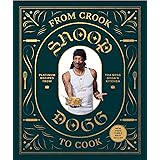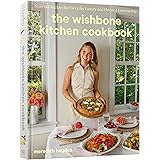Navigating the bread aisle can be surprisingly complex. Many shoppers reach for what they *think* is the best bread, only to find hidden ingredients. For instance, some popular “whole grain” breads can contain as much as 5 grams of added sugar per slice. This means a simple two-slice sandwich could pack 2.5 teaspoons of hidden sugar, a startling amount for something marketed as healthy. The video above dives into this issue, offering clear guidance. This article expands on those insights, helping you make the smartest choices for your family’s nutrition.
The Hidden Truth About “Whole Grain” Breads
Most of us want to choose healthy options. “Whole grain” sounds like a perfect choice, right? However, as highlighted in the video, appearances can be deceiving. Many brands, despite having a “whole grain” label, load their products with added sugars. This practice significantly detracts from the bread’s nutritional value. You might be buying what seems healthy, but it’s often a simple carbohydrate in disguise, processed and stripped of its full benefits.
Checking the ingredient list is crucial for selecting the best bread. Ingredients are listed in order of quantity, so sugar or sweeteners appearing near the top signal a problem. Common culprits include high fructose corn syrup, molasses, or even just “sugar.” These additions can turn a seemingly good choice into one that contributes to energy crashes and unnecessary calorie intake. A truly healthy bread minimizes or eliminates these added sweeteners.
Decoding Bread Labels: Beyond “Whole Grain”
The term “whole grain” is a good start, but it’s not the full story. Many standard loaves use “enriched wheat flour.” This means the grain has been processed, removing the bran and germ. These parts contain most of the fiber, vitamins, and minerals. While some nutrients are “enriched” back in, it’s not the same as having the whole, intact grain. This results in a simple carbohydrate, quickly broken down into sugar by your body, offering less sustained energy and nutritional benefit.
When scrutinizing labels, look beyond just “whole wheat.” The first ingredient should ideally be “100% whole wheat flour” or “100% whole grain flour.” Furthermore, pay attention to the fiber content. A good rule of thumb is at least 2-3 grams of fiber per slice. Protein content is another indicator of a more substantial, nutrient-dense bread. Avoid breads with artificial preservatives, dyes, or an excessively long ingredient list, which often signals heavy processing.
Discovering Sprouted Whole Grain Bread Benefits
The video points out that sprouted whole grain bread represents the best option at the grocery store. This category of bread offers distinct advantages over traditional whole grain varieties. Sprouting is a natural process that germinates the grain, altering its nutritional profile significantly. This makes the bread easier for your body to digest, a huge benefit for overall gut health and nutrient absorption.
Beyond digestibility, sprouted grains unlock more nutrition. They essentially “activate” the nutrients within the grain. This makes vitamins, minerals, and antioxidants more bioavailable. This means your body can actually use these beneficial compounds more effectively. Opting for sprouted grains is a proactive step toward enhancing your diet’s nutritional impact, ensuring you get the most from every slice.
What Makes Sprouted Grains Superior?
The sprouting process involves soaking grains, nuts, or seeds until they begin to germinate. This simple step triggers complex biochemical changes. Firstly, sprouting reduces phytic acid, an “anti-nutrient” found in unsprouted grains. Phytic acid can bind to essential minerals like iron, zinc, and calcium, preventing their absorption. By reducing it, sprouted grains allow your body to absorb more of these vital nutrients.
Secondly, sprouting increases enzyme activity within the grain. These enzymes help break down complex carbohydrates and proteins. This pre-digestion essentially makes the grain easier on your digestive system. It can reduce bloating and discomfort often associated with traditional breads. This makes sprouted bread an excellent choice for those with sensitive stomachs or general digestive concerns.
Top Sprouted Bread Choices for Your Family
Among sprouted bread options, certain brands stand out. Ezekiel bread is often considered the “OG” or original gangster of sprouted breads. It’s organic and made from a variety of sprouted grains, legumes, and seeds. Its dense texture and robust flavor come from this wholesome ingredient list. While incredibly healthy, some might find its texture challenging, especially younger palates. However, it’s a powerhouse of nutrition.
For families seeking a lighter option, the video recommends Silver Hills Sprouted bread, particularly the blue bag variety. This bread manages to be organic, sprouted, and still offers a “light and pillowy” texture. It’s celebrated for making an excellent grilled cheese sandwich, a common kid-friendly meal. This makes Silver Hills a fantastic bridge between optimal nutrition and appealing taste for both adults and children, making the healthy choice easier.
Making the Switch: Tips for Picky Eaters
Introducing new, healthier foods to children can be tricky. If your kids are used to softer, sweeter breads, the change to sprouted varieties might require a little patience. Start by using sprouted bread in familiar recipes, like the grilled cheese mentioned for Silver Hills. The familiar comfort of the meal can help mask the slight texture difference. You can also try toasting it, as the crispiness can be appealing.
Gradual introduction is also key. Initially, you might mix one slice of their usual bread with one slice of sprouted bread in a sandwich. Or, use sprouted bread for snacks, like toast with avocado or nut butter. Highlighting the benefits, like “strong bones” or “more energy to play,” can also help older children embrace the change. Ultimately, consistent exposure and positive reinforcement will make the transition smoother, ensuring everyone enjoys the best bread.
Smart Bread Shopping: Key Takeaways
Making informed bread choices at the grocery store comes down to a few simple rules. Firstly, prioritize sprouted whole grain breads whenever possible. They offer superior digestibility and nutrient availability compared to other options. Secondly, always read the ingredient list carefully. The front of the package can be misleading; the back tells the true story.
Actively look for added sugars, enriched flours, and artificial additives. Aim for breads where the first ingredient is a “100% whole” or “sprouted whole” grain. Remember the importance of fiber and protein content too. By applying these straightforward guidelines, you can consistently select the best bread, providing a genuinely healthy foundation for your meals and those of your family.











